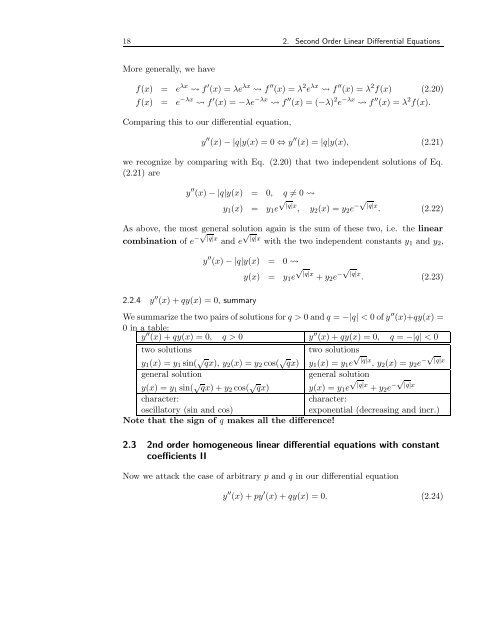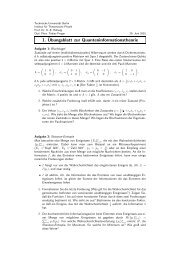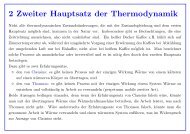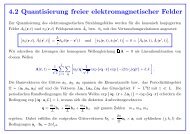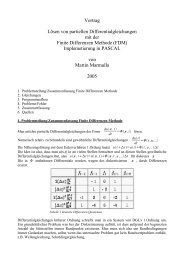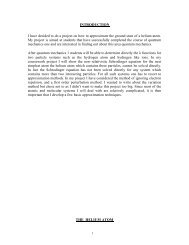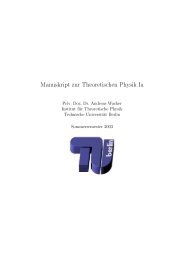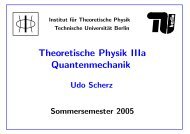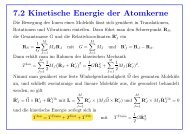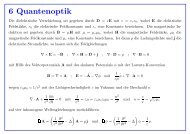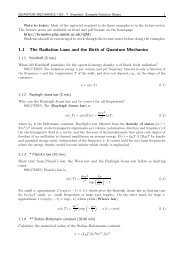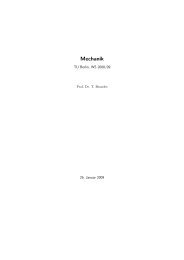2. SECOND ORDER LINEAR DIFFERENTIAL EQUATIONS
2. SECOND ORDER LINEAR DIFFERENTIAL EQUATIONS
2. SECOND ORDER LINEAR DIFFERENTIAL EQUATIONS
You also want an ePaper? Increase the reach of your titles
YUMPU automatically turns print PDFs into web optimized ePapers that Google loves.
18 <strong>2.</strong> Second Order Linear Differential Equations<br />
More generally, we have<br />
f(x) = e λx f ′ (x) = λe λx f ′′ (x) = λ 2 e λx f ′′ (x) = λ 2 f(x) (<strong>2.</strong>20)<br />
f(x) = e −λx f ′ (x) = −λe −λx f ′′ (x) = (−λ) 2 e −λx f ′′ (x) = λ 2 f(x).<br />
Comparing this to our differential equation,<br />
y ′′ (x) − |q|y(x) = 0 ⇔ y ′′ (x) = |q|y(x), (<strong>2.</strong>21)<br />
we recognize by comparing with Eq. (<strong>2.</strong>20) that two independent solutions of Eq.<br />
(<strong>2.</strong>21) are<br />
y ′′ (x) − |q|y(x) = 0, q = 0 <br />
√<br />
y1(x) = y1e<br />
|q|x,<br />
y2(x) = y2e −√ |q|x<br />
. (<strong>2.</strong>22)<br />
As above, the most general solution again is the sum of these two, i.e. the linear<br />
combination of e−√ √<br />
|q|x |q|x and e with the two independent constants y1 and y2,<br />
<strong>2.</strong><strong>2.</strong>4 y ′′ (x) + qy(x) = 0, summary<br />
y ′′ (x) − |q|y(x) = 0 <br />
√<br />
|q|x<br />
y(x) = y1e + y2e −√ |q|x<br />
. (<strong>2.</strong>23)<br />
We summarize the two pairs of solutions for q > 0 and q = −|q| < 0 of y ′′ (x)+qy(x) =<br />
0 in a table:<br />
y ′′ (x) + qy(x) = 0, q > 0 y ′′ (x) + qy(x) = 0, q = −|q| < 0<br />
two solutions<br />
y1(x) = y1 sin(<br />
two solutions<br />
√ qx), y2(x) = y2 cos( √ qx)<br />
√<br />
y1(x) = y1e |q|x, y2(x) = y2e−√ |q|x<br />
general solution<br />
y(x) = y1 sin(<br />
general solution<br />
√ qx) + y2 cos( √ qx)<br />
√<br />
|q|x y(x) = y1e + y2e−√ |q|x<br />
character: character:<br />
oscillatory (sin and cos) exponential (decreasing and incr.)<br />
Note that the sign of q makes all the difference!<br />
<strong>2.</strong>3 2nd order homogeneous linear differential equations with constant<br />
coefficients II<br />
Now we attack the case of arbitrary p and q in our differential equation<br />
y ′′ (x) + py ′ (x) + qy(x) = 0. (<strong>2.</strong>24)


